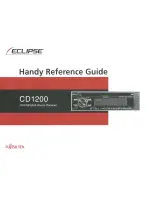
○
RX 1-8 Mono: Monitors receivers 1-8 mono’d to both ears
○
Dante 1-16 St: Monitors Dante In 1-16 with odd Dante channels routed to the left ear and even Dante channels
routed to the right ear.
○
Dante 1-16 Mono: Monitor Dante In 1-16 mono’d to both ears.
●
When viewing a receiver channel’s 1RX View, that receiver channel is solo’d in both ears.
Audio Out Sample Rate
●
The sample rate of the AES and Dante digital outputs is determined by the Audio Out > Sample rate and Sync Reference
settings.
●
The Nexus outputs digital audio at 44.1, 48, or 96 kHz sample rates. Factory default is 48 kHz.
●
The sample rate can only be set when the Sync Reference is set to Internal or BNC In (when receiving timecode).
Otherwise, the sample rate field is read-only.
Audio Out Sync Reference
The A20-Nexus’s Dante and AES outputs can be sync’d to the following sync reference sources:
●
Internal
●
BNC In (Word Clock or LTC). The A20-Nexus auto-detects whether the incoming signal is wordclock or timecode
●
Dante
●
8-Series (automatically selected when docked to an 8-Series)
The following table indicates how the digital output sample rate is determined for each type of sync reference source:
Sync Reference
A20-Nexus Sample Rate Setting
Internal
44.1k, 48k or 96k
BNC In (Word Clock)
Determined by incoming Word Clock frequency
BNC In (LTC)
44.1k, 48k or 96k
Dante
Determined by Dante network sample rate
8-Series (automatically selected
when docked to 8-Series)
Determined by the 8-Series sample rate. Timecode and sync reference are
received from the 8-Series.
●
If the selected sync reference input is not detected, the A20-Nexus switches to its internal clock AND the HP encoder ring
LED flashes orange to indicate that the selected sync reference is not present or invalid.
●
When synced to Internal or Dante, the BNC In can still be used as an LTC source.
A20-Nexus
User Guide
38
















































